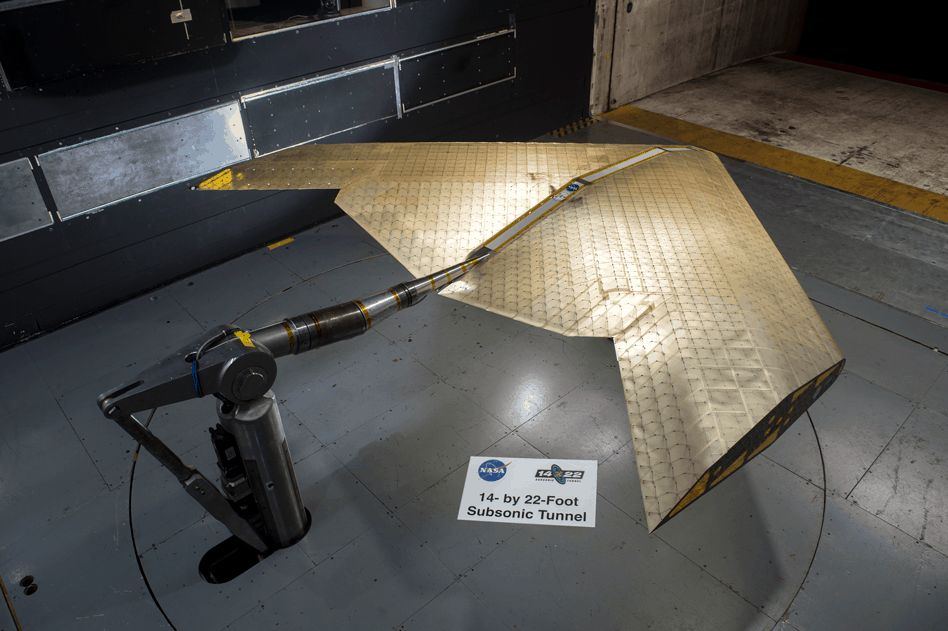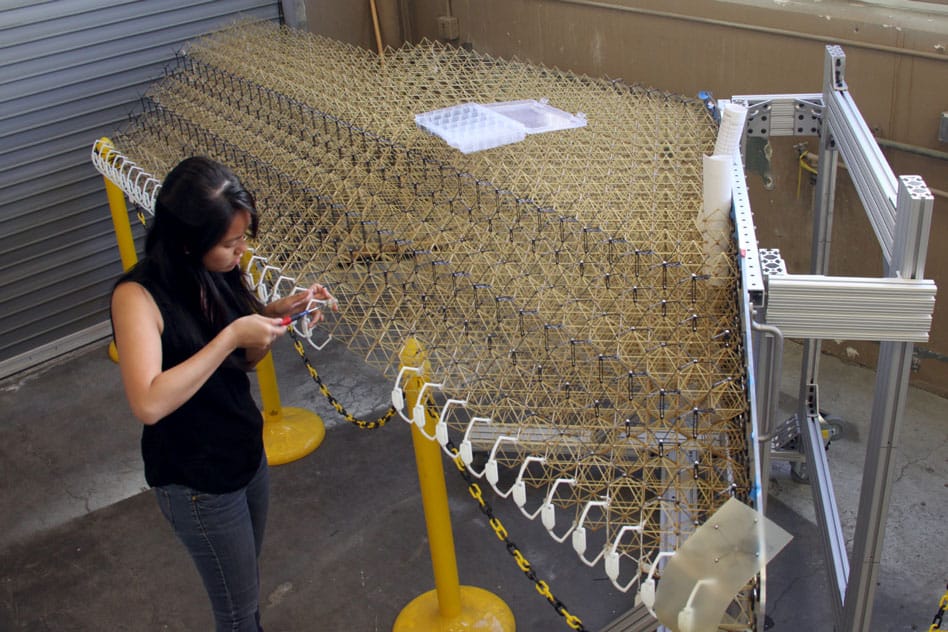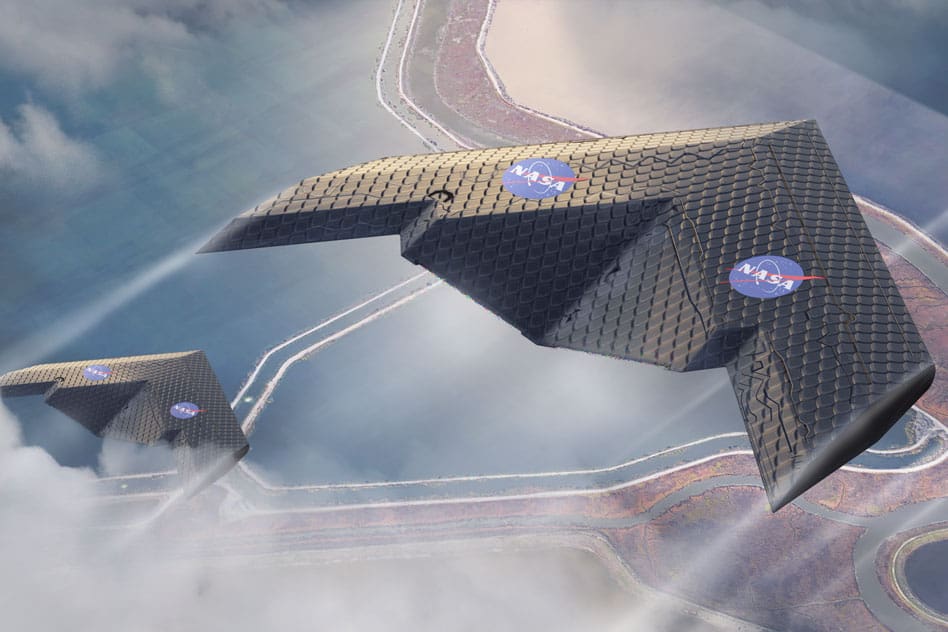
Developed primarily by engineers from NASA and MIT, the wing is made from thousands of triangular components with matchstick-like struts, bolted together in a lattice framework. This lattice is then covered in a thin layer of polymer material similar to the struts. The resulting wing structure is comprised mostly of empty space, forming a mechanical metamaterial that combines the stiffness of a rubber-like polymer with the lightness and low density of an aerogel. According to the researchers, the wing has a density of just 5.6kg per cubic metre.
What’s more, the shape of the wing reacts passively to its environmental forces, with the stiffness in different struts carefully calibrated to achieve the desired effect. Sections of the wing bend in response to the various phases of flight, delivering a more optimal performance at take-off, cruise and landing. The research is presented in the journal Smart Materials and Structures.

“We’re able to gain efficiency by matching the shape to the loads at different angles of attack,” said lead author Nicholas Cramer, a research engineer at NASA Ames in California. “We’re able to produce the exact same behaviour you would do actively, but we did it passively.”
A 1m version of the wing was developed a few years ago to validate the underlying principle, with a waterjet used to fabricate the individual components. This latest research saw the team develop a 5m prototype, using injection moulding to significantly speed up the manufacturing process. The struts still had to be put together by hand, but the team believes this step could be automated using assembly robots, and this is the subject of an upcoming research project. As the wing is made from thousands of sub-units, it also opens up the possibility of entirely new aircraft designs.

“You can make any geometry you want,” said Benjamin Jenett, a graduate student in MIT’s Centre for Bits and Atoms. “The fact that most aircraft are the same shape” — a tube with wings — “is because of expense. It’s not always the most efficient shape.”
During testing at NASA’s high-speed wind tunnel at Langley Research Centre, the wing performed slightly better than predicted, according to Jenett. He also claims the same fabrication system for the wing structure could be used to build blades for wind turbines, facilitating on-site assembly and avoiding the problems associated with transporting ever-longer blades.




Project to investigate hybrid approach to titanium manufacturing
What is this a hybrid of? Superplastic forming tends to be performed slowly as otherwise the behaviour is the hot creep that typifies hot...